Content
Hortensia Bella Anna is a member of the Hortensiev family. It has become known to Russian gardeners since 2012. The variety was bred in the Eastern countries, then gradually spread throughout the world.
Description of hydrangea Bella Anna
This variety has a tree-like shape. The height of an adult plant does not exceed 140 cm, and the crown diameter is 130-150 cm.
The shrub has straight and strong green-brown branches. During the flowering period, the shoots bend slightly under the weight of the inflorescences.
Flowers are large, from 15 to 20 cm in diameter, crimson inflorescences. They are formed only on young shoots. The flowers are small, but correctly shaped: each of them consists of 5 rounded petals with slightly pointed ends.
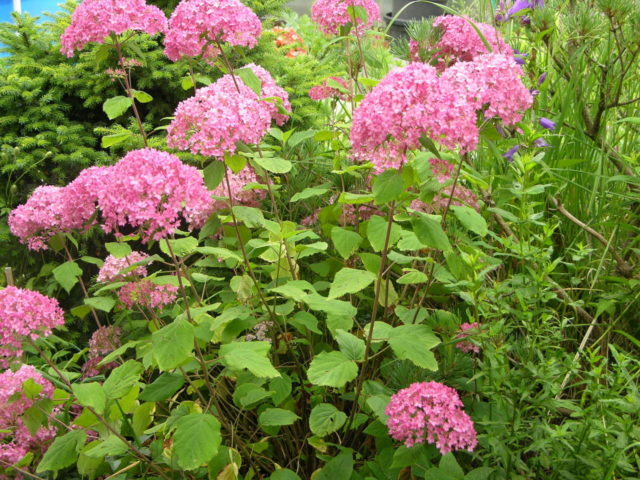
The decorativeness of the hydrangea remains throughout the entire flowering period, as it burns out in the sun, the petals change their shade from raspberry to pale pink
The leaf plates of the variety are light green in color, rounded-ovoid in shape. On examination, streaks can be seen. As the duration of daylight hours decreases, the color of the leaves changes to yellow. The roots of the Bella Anna hydrangea are close to the surface.
The advantages of the variety include an attractive appearance and the ability to change the shade of flowers in different soils. Among the disadvantages of Bella Anna hydrangea, the need for soil selection and the plant's love for watering are distinguished.
Hydrangea Bella Anna in landscape design
Since the shrub is short, it is rarely used as a hedge. More often they prefer to plant it on the lawn or near the gazebos in order to create mixed compositions.
Hydrangea pink Bella Anna, although she loves the sun's rays, grows well in partial shade. If you create diffuse lighting for it, then this will be the optimal condition. Landscape designers use this feature by placing shrubs near fences or at home.
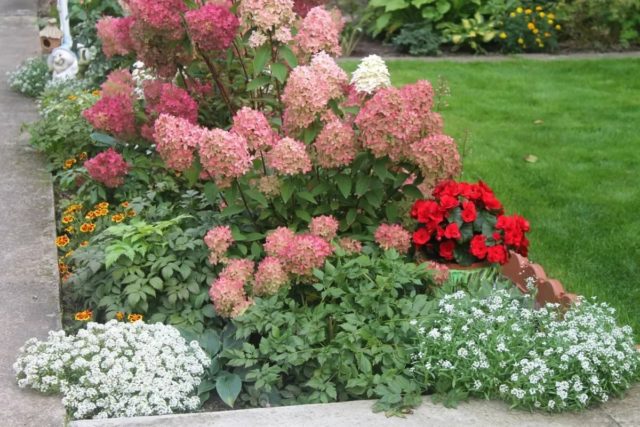
More modest crops will become good neighbors for hydrangea: mordovnik, aconite or perennial hosta
Winter hardiness of hydrangea Bella Anna
Hydrangea can be grown in regions where the air temperature does not drop below -34 ° C in winter. If there is a risk of an abnormal cold snap, then it is advisable to cover the shrub with improvised means.
Planting and caring for hydrangea Bella Anna
To obtain large and long-term flowering plants, you must adhere to the rules of planting and caring for the variety. Hydrangea Bella Anna blooms for 2-3 years after transferring the seedling to the open ground. Depending on the composition of the soil and leaving, inflorescences can appear on young shoots the next year after planting. The optimal time for the procedure is spring: when the snow melts, the soil warms up, and the spring frosts stop.
Selection and preparation of the landing site
The place should be well lit or in partial shade. Do not place Bella Anna hydrangea under trees as they will compete with each other for moisture.
The variety is picky about the composition of the soil: it tolerates alkaline soils very poorly. Large inflorescences can be seen if Bella Anna hydrangea is planted in an area with an acidic substrate (pH no more than 6).
If the soil on the site does not meet the requirements, then the plant will either not take root, or its inflorescences will be small, quickly fading, of a dull shade.
To determine acidity, you should purchase a litmus indicator from a flower shop.
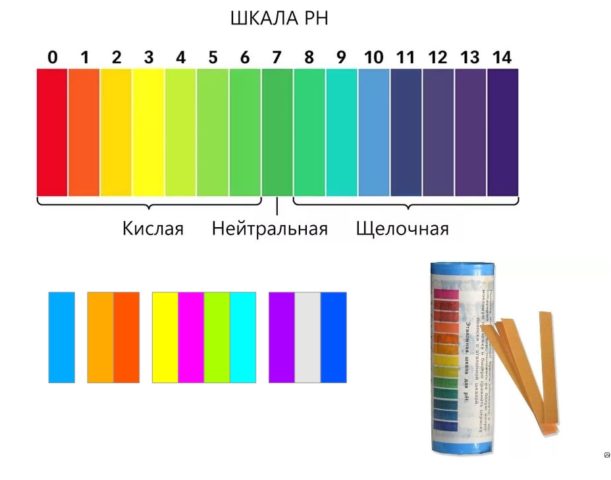
If, as a result of the test, it was found that the acidity does not meet the requirements, this can be changed using improvised means
To raise the pH, a manganese or citric acid solution is recommended. To do this, dissolve 1 g of the product in 1 liter of water. Alternatively, a substrate from coniferous stands can be used as an oxidizing agent.
The soil for planting should contain soil, compost, peat and sand in a ratio of 2: 2: 1: 1. Mineral and organic fertilizers should be applied to the depleted soil.
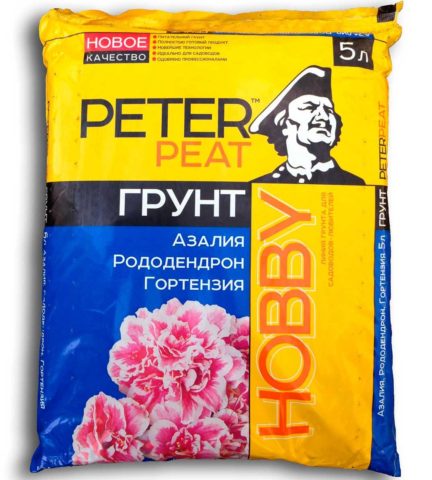
If it is impossible to prepare the site yourself, you can use ready-made soil from a flower shop
Landing rules
If more than one shrub is planned to be placed on the site, then the planting holes should be dug while maintaining a distance of 1 m. If the seedling is medium-sized, then the size of the hole should be 40x40x40cm. When the plant is large, the hole should be widened so that the root system is fully extended when planting.
Fill the hole with soil, then carefully spill and mulch. This will keep the soil moist and allow the shrub to take root faster.
If the seedling has a closed root system, then there are no special planting requirements: you can move it throughout the summer season.
When the roots of the Alla Bella hydrangea are exposed, the shrub should be transferred outdoors immediately after purchase. If this is not possible, then the root system of the plant is wrapped in a damp cloth or placed in a plastic bag.
During planting, carefully remove the seedling from the container and, without damaging the roots, place it in the hole, cover it with earth on top and tamp it slightly, then water the seedling thoroughly.

You should not save on watering: hydrangea is very demanding on moisture, so 1-2 buckets should be poured under each seedling
Watering and feeding
When caring for hydrangea, the soil should not be allowed to dry out. It is recommended to increase the frequency of watering during dry months. After moistening the soil, it should be mulched.
In the spring, when the shoots are actively growing, and in the summer during the flowering Bella Anna hydrangea, it is important to provide fertilizers of mineral and organic origin. For this, it is recommended to use complex tools. During the growing season, for feeding, 20 g of fertilizer are dissolved in 10 liters of water. Pour at least 3 buckets of solution under each bush.
In summer or autumn, it is recommended to irrigate Bella Anna hydrangea with Lauren's complex, diluting 10 ml of the drug in 1 liter of water.
Pruning hydrangea Bella Anna
The recommended time for the procedure is spring, although gardeners carry out it in the fall. The purpose of pruning is to remove weak and damaged shoots. The oldest branches are cut to the ground.
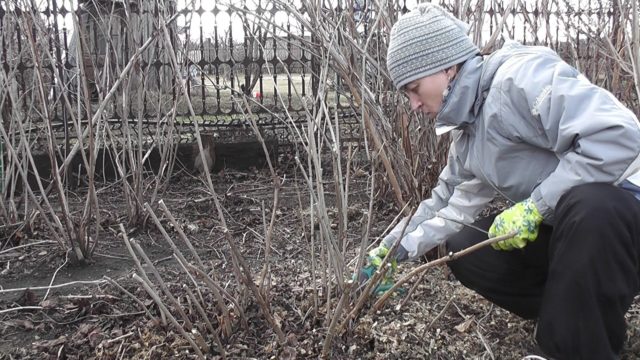
If the shrub is cut short, then next year the flowers will be large and few in number, and if only the tops are removed, then the plant will delight with small inflorescences
Preparing for winter
In September, you should completely stop watering.The older the plant, the more frost-resistant it is, so adult shrubs do not need shelter. Young specimens need protection from wind and low temperatures within 2-3 years after planting: they are hidden under branches of spruce branches or covering material. The trunk circle should be covered with mulch, and later with snow.
Reproduction
The most common way to get multiple Bella Anna hydrangea shrubs is by grafting. The process is carried out in mid-July. To do this, the side shoots are cut off and planted in a nutrient mixture consisting of peat and sand in a 2: 1 ratio.
To speed up the process, before planting, the cutting is treated with a Zircon growth stimulator, or sprinkled with Kornevin. A new root system is formed in the plant 3 weeks after planting.
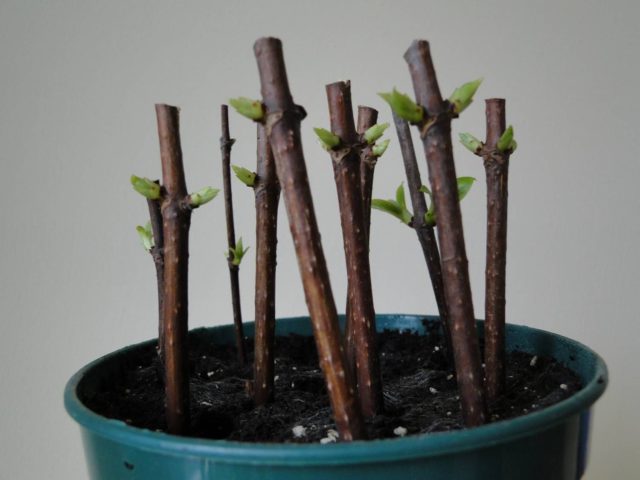
Cuttings in the container must be placed at a slight slope, make sure that the soil is moistened
Adult shrubs are propagated by division: they are dug up and divided into two equal parts. In order for the Bella Anna hydrangea to take root, at least 3 buds must be kept on it.
The most laborious breeding method is seed. The seed is placed in a weak acidic substrate and the soil is sprayed with water from a spray bottle until the first shoots appear. Usually this period is 30 days.
Diseases and pests
Hydrangea Bella Anna has good immunity, but it can get sick if it grows near water bodies, due to a violation of the drainage system.
Excessive soil moisture is one of the reasons for the appearance of gray rot. As a therapeutic measure, hydrangea should be irrigated with Fundazole solution, after cutting out the affected branches. Treatment with the drug is carried out twice with an interval of 2 days.
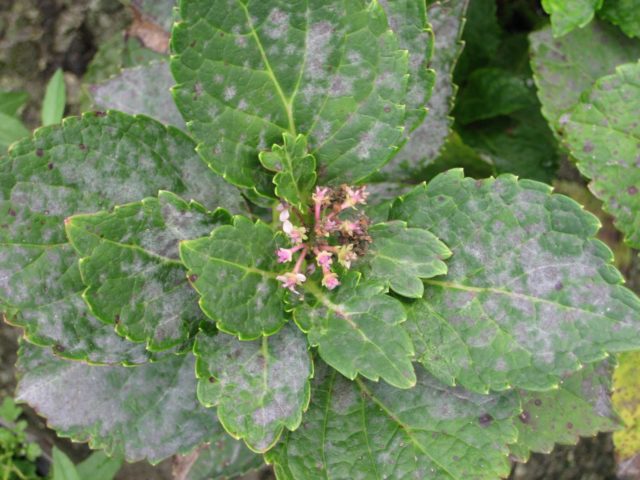
To prevent the development of gray rot, it is important to control the operation of the drainage system and avoid waterlogging of the ground.
Common pests for Bella Anna hydrangeas are snails. They destroy young leaf plates and buds.

To destroy snails, you should scatter the preparation Thunderstorm around the bush.
To neutralize the spider mite, whose activity leads to the drying of the leaf plate, it is recommended to use Fitoverm. The product also fights against aphids and thrips.
Conclusion
Hydrangea Bella Anna is one of the tree varieties of the Hortensia family. The plant is frost-resistant, moisture-loving, has good immunity. The main purpose of the flower is to decorate the garden area.
Reviews of hydrangea Bella Anna








